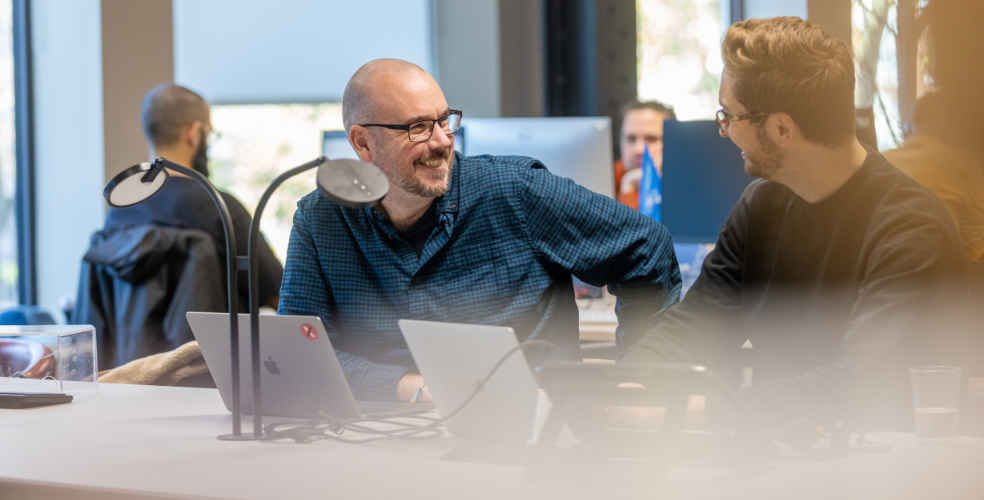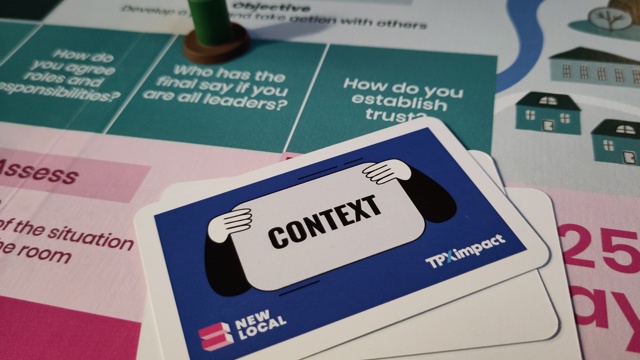Do you need an automation solution? How about a new technology platform? Should you restructure your website?
We know that technology is a powerful tool to address an organisation's needs. It's natural to turn to technology as a solution, whether that be when there's a problem, or when a shiny new piece of tech arrives on the scene promising new business opportunities.
But preconceived ideas about what solutions should be used can send organisations down a dangerous path, with disappointing results. “Solutionising” commonly happens for a variety of reasons, ranging from communication issues, funding structures, and the digital maturity of the organisation as a whole.
In this article we'll examine why organisations commonly fall into the trap of being driven by solutions, and what to do about it.
Why does solutionising commonly occur?
First off, it's easy to see why organisations often approach a project with a solution in mind.
It could be that they are in the early stages of their digital transformation journey. They know something isn't working well, or that there's potential to do things better, but they haven't strategically undertaken this kind of work before. They're probably used to waterfall delivery methods where they need to define the end-state at the start, rather than digital ways of working that iterate and adapt.
Alternatively, it might be a funding issue. Securing funds often requires people to be highly specific about the details of their project upfront. This makes it difficult to make changes further down the line, as expectations and accountabilities have already been set.
Accountability structures also impact in other ways. As User Researcher Lowri Davies states, those accountable for delivering the project can feel they don’t have licence to explore the problem because others already have (or are assumed to have done). They also might be risk averse to exploring the possible solutions (i.e. challenge their boss’s brief) as this can feel like opening a Pandora’s box of other issues.
Lastly, the expected outcomes for the project might be too narrow in scope or influence in relation to the problem the organisation is facing. For example, as Davies notes, an organisation might approach a wider set of interconnected problems by splitting them into smaller chunks and allocating these to siloed individuals. Breaking a problem up in this way might feel like a manageable way of dealing with it, but it leads to localised solutions that don't address the broader issues at play.
Thinking in terms of solutions - what are the consequences?
We've said that solutionising leads to disappointing results. This can have a wide range of consequences, including:
- A product, feature or service is built that isn't fit for purpose and therefore isn't used
- Risk – in terms of cost and reputational damage when things go wrong – increases over the course of the delivery and must be reckoned with at the end
- A piece of technology is modernised in an isolated way, failing to address problematic processes and organisational issues which continue to cause problems
- Additional problems are created elsewhere: for example, a customer service that doesn't meet the needs of users may result in increased demand for customer contact centres.
But if concentrating too much on the solution is a no-go, then what's the alternative?
A key feature of modern technology delivery is to focus on the needs of users every step of the way. It's a core principle of agile product management, and helps to ensure that the right thing is built in the right way.
How can we start thinking about user needs?
In order to reframe the conversation around user needs, organisations need to be open minded about their brief. In the Discovery phase of a project, we analyse the brief in the context of the current state of affairs at the organisation, including how it fits in with wider transformation programmes and organisational aims.
Taking the time to query the brief in this way enables any assumptions to be validated or challenged, and for everyone to gain a much greater understanding of the problem at hand. It puts organisations in a much better position to plan their course ahead so that they can build something achievable, that is high value, and aligns with target outcomes.
Facing the facts
Sometimes, organisations know what needs to be done but don’t necessarily know how — or feel empowered — to do it. A key role for delivery partners at this stage is to map this out for them, working on connecting them up with their own colleagues and helping them get buy-in from senior stakeholders.
For example, it might become apparent during Discovery that a technology based solution isn't required, or that the root of the problem is operational — and if left unaddressed will see the organisation continuing to face the same inefficiencies even if they commission a new product.
Putting in the groundwork at this stage also has benefits beyond the initial project, as organisations can identify and prioritise areas of work that require attention at a later date.
What do you get when you reassess the problem?
When organisations are open-minded about their project, don't fixate on preconceived ideas about the solution, and focus everything on the needs of users, they are more likely to get the right solution to the right problem the first time around.
This provides greater efficiency with reduced costs, as Oliver Cook notes because you’re only building digital tools for well defined and identified user needs. In other words, you're building something people actually want... The risk of failure is much lower because you’ve been testing the product or service with end users and confirming it meets their needs.
The organisation also benefits internally too.
Planning initiatives through the lens of user needs requires research and analysis of how an organisation operates. It, therefore, provides evidence of wider organisational benefits that can be shared with leaders and sponsors, generating support for transformation efforts as a whole. Teams can gain a sense of internal challenges they might come across in delivering their project, and how to address this in advance to avoid delays. The research process itself also ensures stakeholder engagement within the organisation, as those who take part in interviews during the Discovery phase are more likely to feel involved and be supportive of the project.
The right solution to the right problem
Delivering solutions — and making positive, impactful change — can be a huge challenge, particularly in complex organisational environments.
Organisations want to know that their budget will be well spent, that the project will run to time — and generally, that the whole thing will be worth it.
Being guided by user needs is the ideal way of navigating these processes, as it ensures the end goal really is worth pursuing, the most important features are prioritised, and the product or service gets delivered. If organisations can see past difficulties in funding or culture, focusing on users will really help them to get the best results and the most value out of their transformation efforts.

Transforming data sharing across government
We partnered with CDDO to pioneer a private beta working product that enabled cross government departments to share data.
Read moreOur recent insights
Transformation is for everyone. We love sharing our thoughts, approaches, learning and research all gained from the work we do.

The role of play in building leadership skills
How play can offer local government leaders a powerful tool to break free from rigid structures.
Read more
A game-changing approach to leadership
Radical Leaders: The Game! uses real-world crisis scenarios to challenge local government leaders, fostering collaboration, agility, & community focus.
Read more
Transforming archiving through AI
How artificial intelligence can turn archives into living resources that shape the future while preserving the past.
Read more

